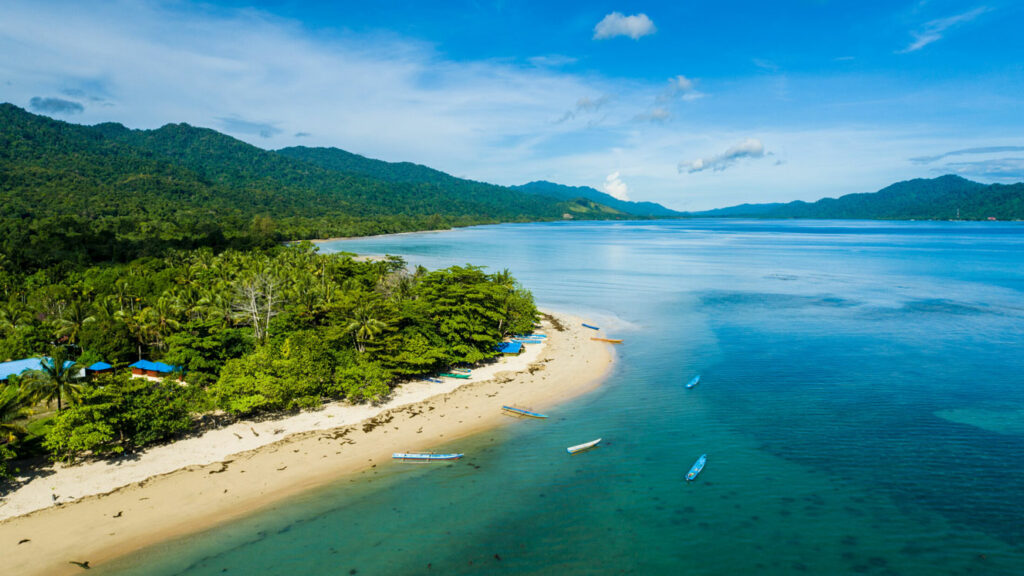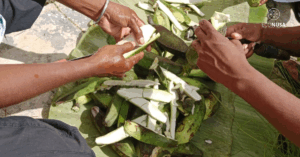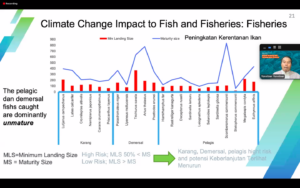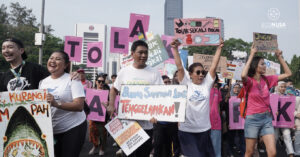
The territorial waters of the Malaumkarta which are enforced egek. (EcoNusa Foundation)
Eastern Indonesia has many cultures and traditions, including in protecting nature. For example, communities in Tanah Papua and the Maluku Islands who live in coastal areas and islands are familiar with the term sasi.
Sasi is an area that is mutually agreed upon by the community in a participatory way to take and manage the forests and oceans potentials. Sasi is also interpreted as a way to regulate sustainability traditionally by a group of people in a village or clan.
Long before the term sasi was used, there was another term regarding the concept of sustainable use of space that exists in every tribe or indigenous people in Papua. For example the Moi tribe, which is an indigenous tribe that inhabits the western peninsula of Papua or the Malamoi region, has long carried out the practice of using space with its own context and understanding, called egek.
Read Also: Retracting Egek, Looking at Moi Tribe’s Natural Deposit
Egek is one of the territorial divisions of the Moi tribe. They have divided the concept of using space or area zones which consist of:
- Soo (sacred or white) is a special core zone for the Moi tribe. This zone cannot be traversed, let alone cut trees within this area. In Moi cosmology, soo is a place for the spirits of the clan that owns soo to wait on God. This zone can only be passed by the alumni of traditional kambik education.
- Kofok (sacred place) is a zone that stores history and clan totems. This zone is included in the core and buffer zone of the soo zone. Kofok is impassable and no extraneous sounds are allowed.
- Egek is a limited use zone, there are times when the people can take resources on an area (when the egek is opened) and there are times when the area is forbidden (when the egek is closed). Usually the Moi tribe performs prohibitions or egek in sago hamlets, fish ponds, and places for birds of paradise (kelnaing). Egek has high value because it stores natural logistics that are important for the sustainability of indigenous peoples’ lives, especially sustainability for posterity.
Egek is applied to protect the main zone, for example the application of egek in the forest to protect sago trees, damar trees, cempedak trees, langsat, and its surrounding rivers that are inhabited by many types of fish. The implementation of egek at sea area is also carried out to protect the core zone that is determined by consensus, such as fish ponds, by marking the location.
Read Also: Blue Economy Financing, An Inevitability
Egek regulates the ban for a certain period of time. Time for closing and opening egek are mutually agreed upon. When the egek is opened for harvesting the seafood, the community will invite their closest family members to harvest together.
Knowledge of egek is passed down from generation to generation in kambik schools, a traditional school of the Moi tribe, and is practiced by the tribe members as a traditional applied conservation science. Apart from egek, their traditional education also taught knowledge of traditional medicine, health sciences, agricultural science, to carpentry knowledge.
In Malaumkarta Village, the concept of traditional conservation began to be encouraged by the people in the village with the formation of a rather formal customary organization. The organizational structure is regulated and compiled by traditional leaders with reference to customary rules. The main program of implementing the traditional conservation culture or egek is to prohibit and restrict the extracting of marine products.
Read Also: Getting Money from Protecting Land in Yoboi Village
The egek area covers all customary land in five villages, namely Malaumkarta, Suatolo, Sepanjangt, Malagufuk and Mibi. Communities are only allowed to catch fish manually, meaning by traditional fishing or diving. Using other fishing gears are prohibited.
To determine traditional conservation areas, the Moi tribe always bases it on available natural potential (core zone). Then it was brought together in a traditional meeting which was attended by the community and several nearby villages. The meeting was to inform local residents of the egek boundaries and the natural resources potentials that are protected. During the meeting, an egek procession will be delivered by the executor of the traditional ceremony, one week before the closing time for the traditional conservation area (egek).




